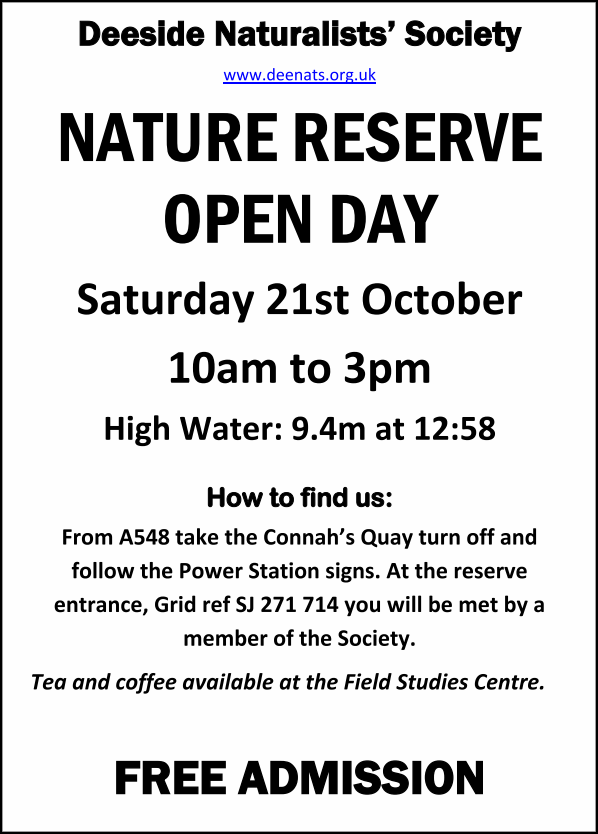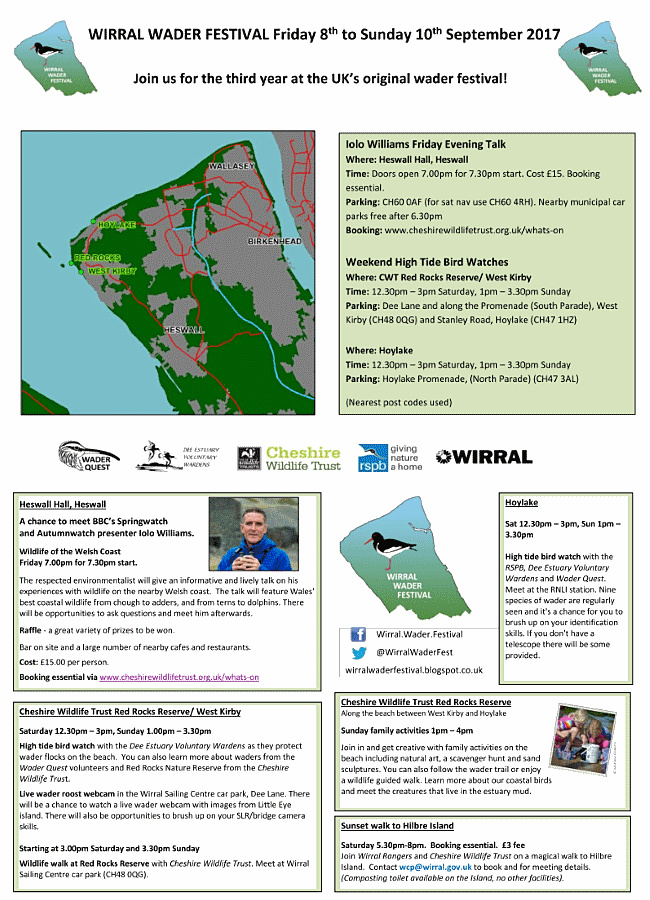Site menu:
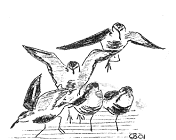
September 2017 Newsletter
Wirral Wader Festival 2017.
Colour Ring Report.
NEW publication - Rare and Scarce Birds of Cheshire and Wirral.
August Bird News.
Forthcoming Events.
Latest Newsletter.
Wirral Wader Festival 2017
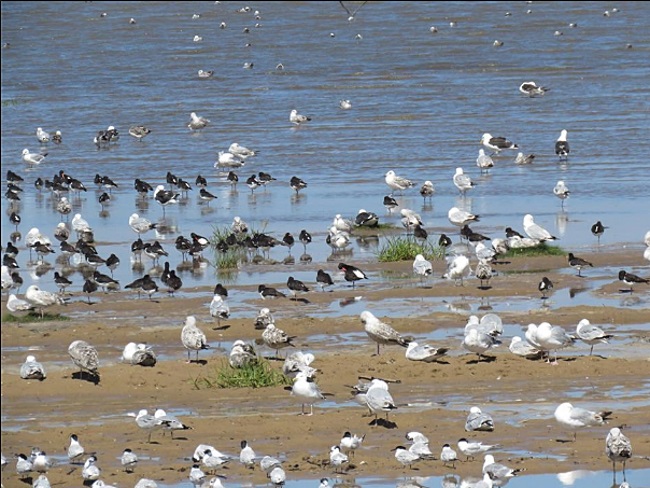
© Dee Estuary Voluntary Wardens
The third Wirral Wader Festival will take place this September to celebrate the tens of thousands of wading birds that visit Wirral’s unique coastline every year. Wading birds such as knots, dunlins, curlews and bar-tailed godwits feast on the rich mudflats of the Dee estuary and North Wirral shores and can be easily seen from places such as Hoylake promenade. To showcase this natural spectacle, Wirral Coast Partnership has organised a busy programme of events for Wirral Wader Festival on the 8th, 9th and 10th September.
Karen Leeming, Chair of the Wirral Coast Partnership commented that: “Since the Wirral Wader Festival Partnership held the first UK Wader Festival in 2015, it has encouraged a number of other UK coastal areas to follow suit and we think that this is a fantastic achievement.
“The entire Wirral coastline has protection as a Site of Special Scientific Interest for the internationally important numbers of wading birds that live here through autumn and winter. As a result, it is the focus of conservation efforts from a number of environmental organisations, local authority departments and private sector organisations who all contribute to the event.
“The Festival starts with a talk by the naturalist and environmentalist Iolo Williams, also a renowned presenter on the BBC’s Springwatch and Autumnwatch, on Friday evening and then a full weekend of events held at Hoylake and West Kirby.
“Everyone is welcome from keen bird watchers to people who have never looked through a telescope but who would like to learn a bit more about local wildlife – we have lots of people to help identify what you are looking at, and we have a lot of activities for children and the young at heart.”
Wirral was approached to hold the first event of its kind in the UK in 2015 by Rick and Elis Simpson of Wader Quest. They came on a visit to view the remarkable efforts of the Dee Estuary Voluntary Wardens (DEVW) who protect the thousands of birds roosting on West Kirby and Hoylake beaches at high tide.
Wirral Wader Festival was created by DEVW with Wirral Council’s Coastal Rangers, Cheshire Wildlife Trust, the RSPB and Wader Quest.
There will be high tide watches to marvel at the knot and dunlin roosts on Hoylake beach and at Cheshire Wildlife Trust's Red Rocks nature reserve. At West Kirby there will be live footage beamed direct from Little Eye, showing off the oystercatchers and curlews up close.
Cheshire Wildlife Trust will be holding guided walks around the Red Rocks SSSI nature reserve and hosting the children’s activities. Wirral Rangers will be guiding a walk to Hilbre Island.
For full details of the events and
activities during the festival, visit
www.facebook.com/wirralwaderfest,
or wirralwaderfestival.blogspot.co.uk.
Most activities on Saturday and Sunday are free but some have a small
charge. Seats for the Iolo Williams talk cost £15 and must be
pre-booked on: www.cheshirewildlifetrust.org.uk/whats-on.
NOTE: High Tides (Liverpool) are as follows during the Wader Festival:
Friday 8th Sep - 1315hrs, 9.4m.
Saturday 9th Sep - 1351hrs, 9.4m.
Sunday 10th Sep - 1430hrs, 9.2m.
Colour Ring Report
As usual Black-tailed Godwits dominate the colour ring spotting
activity with up to 4,000 at the Caldy Wildfowl Collection -
since
the birds returned in July we have recorded 24 different ringed birds a
total of 307 times, this compares to 2016 (itself a record year) when
we saw a total of 20 ringed birds 142 times (in 2016 most were at
Gilroy). The reason for this
increase is three fold - there have been more birds in total (last
year's highest August count at Gilroy was 2,580), there has been
greater observer effort and viewing conditions at Caldy are better for
seeing ringed birds than at Gilroy, with the view point being both
closer and elevated above the godwits. Below I summarise the life
history of three of them (we are still waiting for feedback for many of
them).
Other
wader species have been a bit disappointing although it was good to get
a second record of a Redshank and only our
second colour-ringed Avocet in my database. Colour-ringed
Sanderlings and Dunlin remain elusive, however we had an interesting
Great Black-backed Gull and Lesser Black-backed Gull.
Black-tailed Godwits
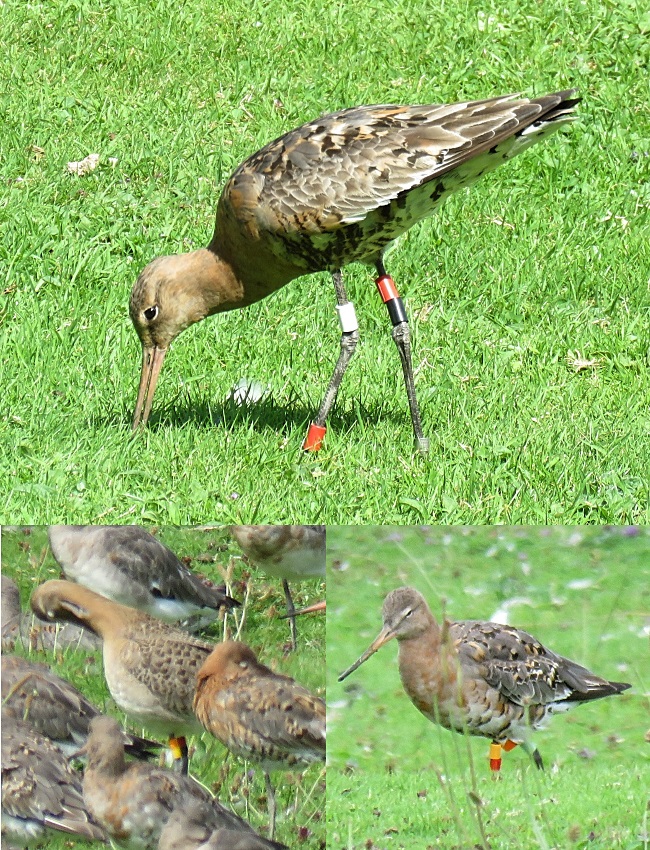
Black-tailed Godwits
Logging the colour-ringed godwits
enables us to get an idea of the turnover of the moulting flock and
it's interesting that birds which winter to the south of us quite often
only stay a day or two, as per two of the ones described below -
obviously in a hurry to get to familiar territory. Others
are our regulars which we see day after day, intriguingly most of these
regulars have their favourite spot in the field where they moult so not
only do we see them every day but in the exact same place every
day. This appears to be an undocumented behaviour and we are not sure
why they do it, other than they are creatures of habit like ourselves!
See my article Observations of Black-tailed Godwits
written in 2016 when they were at Gilroy.
W//R-RN -
ringed as an adult in Langstone Harbour, Portsmouth, on September 5th
2010.
Recorded at Caldy Wildfowl Collection on August 18th 2017.
Since being ringed this bird has spent every autumn and winter in the
Langstone/Chichester/Pagham Harbours area. But it wasn't until 2016
that it was recorded in summer when it returned very early
from breeding in Iceland when it was on the Thames estuary on June 28th
before moving to the Oare Marshes in Kent during July and August. There
are two records from Iceland in May 2013 and May 2015.
OR-OflagL
- ringed as an adult on the Reserve de chanteloup, Ile-D'Olonne, France
on March 19th 2014.
Recorded at Caldy Wildfowl Collection from July 28th to August 1st 2017.
Up until the above record this bird has never been recorded outside of
France with nearly all records during late winter and early spring on
the Atlantic coast just south of Brittany, a favourite are for the
godwits.
OY-RN
- ringed as a tiny chick in southern Iceland on June 11th 2017.
Recorded at Caldy Wildfowl collection on August 7th 2017 and was
present
there for the rest of the month.
It was among the first of the juveniles to arrive from Iceland, many
more have since arrived during what was a good breeding season for
them.
Avocet
WB-LY - ringed as a chick at Seal Sands, Cleveland, on June 7th 2017. One of a brood of two which were both ringed,Recorded at Oakenholt Marsh on August 6th 2017.
Redshank
R//YW-YB - ringed as an adult at Peterstone, near Cardiff, on January 12th 2016.Recorded on Heswall shore on July 15th 2016 and August 4th 2017.
Only other record is at Rhymney Mouth, near Cardiff, on March 12th 2017.
Along with many other Redshanks this bird must be using Heswall as a staging post on it's way from it's breeding grounds to South Wales. We don't know where it breeds but it is likely to be Scotland or Iceland.
Great Black-backed Gull
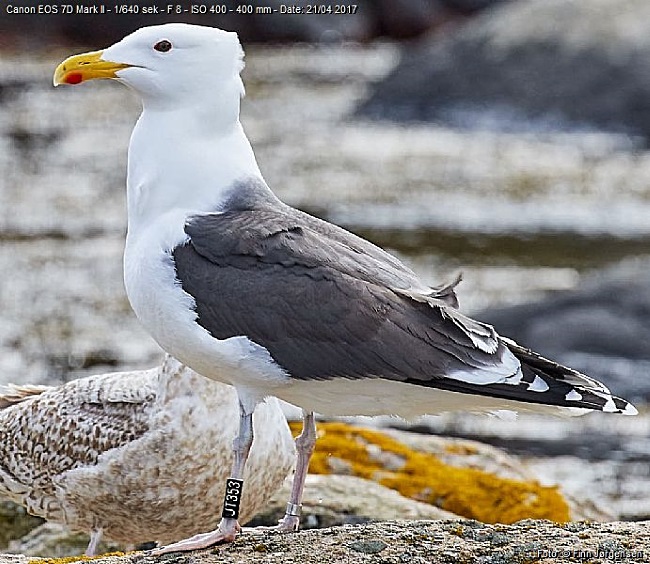
JT353 - white letters on a black ring.
Ringed as a chick in the southern tip of Norway (Mandal) on June 19th 2013.
Recorded on Hoylake Shore on September 1st 2015 and August 21st 2017.
As a juvenile it's first stop after leaving Norway was the famous Bird Observatory on Helgoland island (Germany). The only other record was back in Mandal, Norway, in April 2017 meaning it has travelled back to where it hatched, presumably to breed.
Lesser Black-backed Gull
R2DY - Yellow letters on black ring.Ringed as a chick on the Ribble Marshes on June 25th 1999.
Recorded on Hoylake Shore on August 21st 2017.
After ringing the first record of this bird was on the Algarve, Portugal, in April 2001, it was back there in January 2015 and October 2016. The only other record was at Porto do Son (north-west Spain), in September 2009.
Little Tern
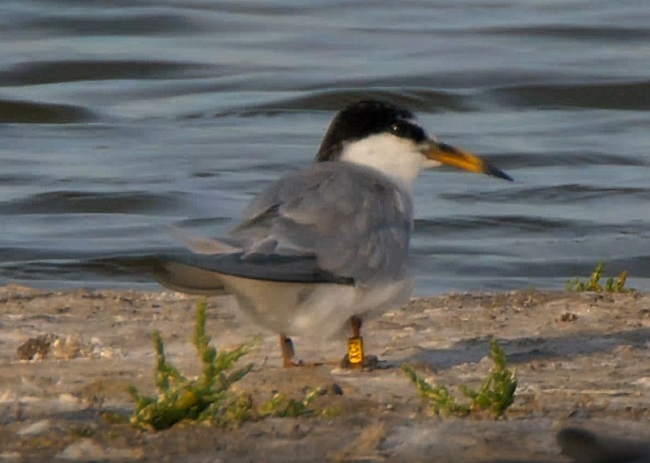
XCJ - black on yellow ring.
In the August Newsletter I reported "Recorded at East Chevington, Northumberland, on July 3rd 2017.
Ringed as a chick at Gronant on July 10th 2016.
Notable for two reasons, that it came back to the UK in it's first summer, perhaps more common than previously thought, and the first Gronant colour-ringed bird to be seen away from the Irish Sea."
Since then our attention has been drawn to a video of this same bird taken in the Netherlands sometime during the summer - at the time of writing I don't know the exact location or date - but at some stage it must have flown across the North Sea thus demonstrating how widely at least some of the first year Little Terns disperse.
Richard
Smith.
Colour-rings were also reported by Matt Thomas, Steve
Hinde and Colin Schofield.
New Publication
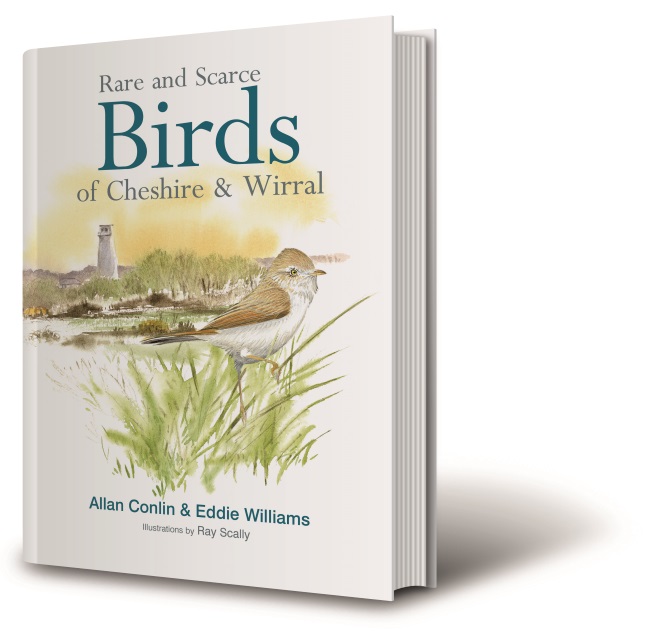
This eagerly awaited book will be available in September, going at sale in the Reception Hide at Burton Mere Wetlands on the 9th (see Events below for further details). There will be a full review in this newsletter within the next month or two. The cost will be £24.99 + PP. For further details and to order please email rarebirdingwirral@gmail.com.
Top of Page
August Bird News
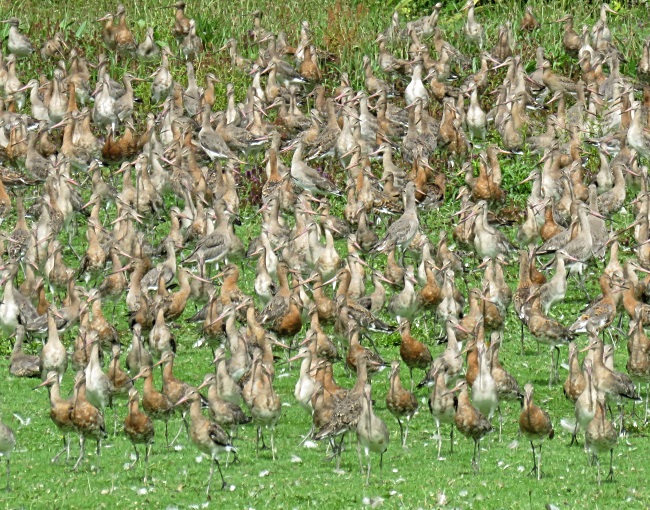
Although most of the usual birds were seen, some in good numbers, it
has to be said that the month was relatively quiet. But there were
certainly impressive numbers of Black-tailed Godwits and the 4,100 at
Caldy on the 29th was a record inland count for August in the Dee
estuary area as was the count of 227 juveniles - it has been a good
breeding season in Iceland. The count of 6,670 Redshanks at Heswall on
the 26th wasn't quite a record high for the site, but was still
probably the
biggest flock in the country for this month!
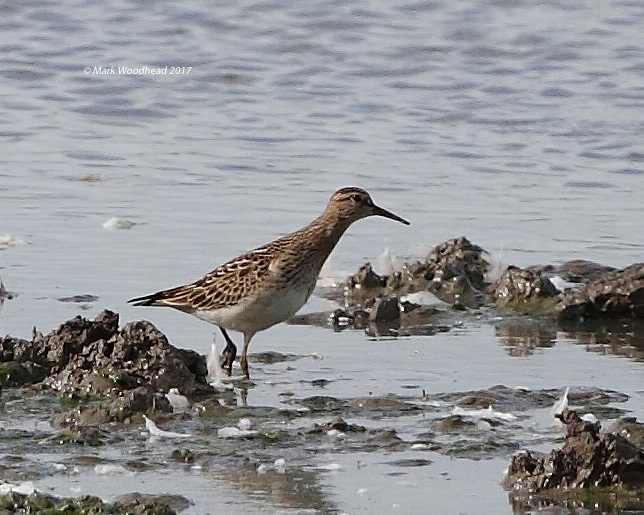
There was an impressive count of 14 Spotted Redshank at Connah's Quay
on the 14th and a Pectoral Sandpiper at Burton Mere Wetlands at
the month-end was the only notable rarity. Plenty of Great
White Egrets were recorded including an excellent count of seven at
Burton.
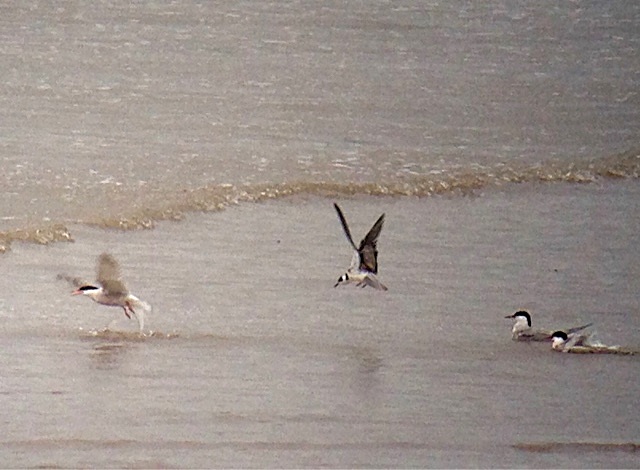
Hilbre Bird Observatory
A few Black Terns were seen with singles at Hoylake and Red Rocks whilst five were in the tern roost at Hilbre on the 25th. An impressive 202 Little Terns were off Hilbre on the 21st with 1,200 Sandwich Terns at Gronant the following day. Arctic Skuas were recorded on several dates max seven both at Hilbre and Red Rocks.
One or two Marsh Harriers were about as
was a single Hen Harrier. No Ospreys were seen but a Red Kite flew over
Neston on the 12th. Quite a few Wheatears passed through including a
count of 10 near Burton Point on the 30th.
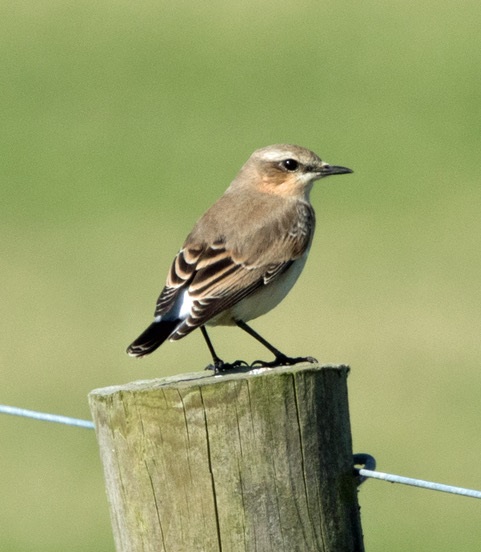
Top of Page
What to expect in September
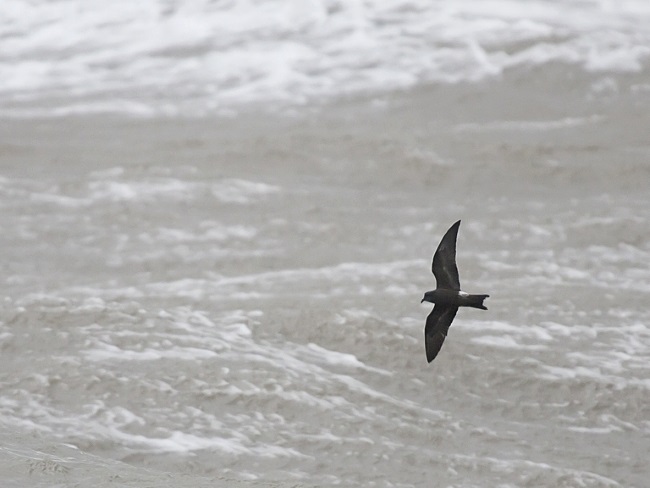
http://www.fromthemuddybanksofthedee.com/
Curlew Sandpiper is another species associated with September. For more info about Curlew Sandpipers see The Curlew Sandpiper Influx (2011) and Curlew Sandpiper Influx 2016. We will also get plenty of other waders passing through including Little Stints, Greenshanks and Ruffs.
September is always good for rarities and in the past few years we've had Dotterel, Hoopoe, Little Shearwater, Sooty Shearwater, Red-backed Shrike, Semi-palmated Sandpiper......
Top of Page
Forthcoming Events
September Highest Spring Tides (Liverpool)
Also
see Tides
page.
20th September, 12.03hrs (BST), 9.5m.
21st September, 12.41hrs (BST), 9.5m.
22nd September, 13.15hrs (BST), 9.5m.
NOTE:
High Tides (Liverpool) are as follows during the Wader
Festival:
Friday 8th Sep - 1315hrs, 9.4m.
Saturday 9th Sep - 1351hrs, 9.4m.
Sunday 10th Sep - 1430hrs, 9.2m.
Forthcoming Events
Organised by the Wirral
Ranger Service , Flintshire
Countryside Service and the
RSPB (Dee Estuary):
All these events and walks have bird interest, even those not
advertised specifically for birdwatching. No need to book for these
events unless specified - please check below.
WIRRAL WADER FESTIVAL September 8th to 10th 2017 - Further details will be published in September Newsletter on this website but here are a few highlights:
Friday September
8th: Iolo Williams Friday Evening Talk - Wildlife of the
Welsh Coast.
Where: Heswall Hall, Heswall
Time: Doors open 7.00pm for 7.30pm start. Cost £15. Booking
essential.
Parking: CH60 0AF (for sat nav use CH60 4RH). Nearby municipal car
parks free after 6.30pm
Booking: www.cheshirewildlifetrust.org.uk/whats-on
Saturday
September 9th: Sunset walk to Hilbre Island.
Saturday 5.30pm-8pm. Booking
essential. £3 fee
Jo in Wirral Rangers and Cheshire Wildlife Trust o n a magical w alk to
Hilbre
Island. Contact wcp@wirral.gov.uk to book and for
meet ing details.
(Composting toilet available on the Island, no other facilities).
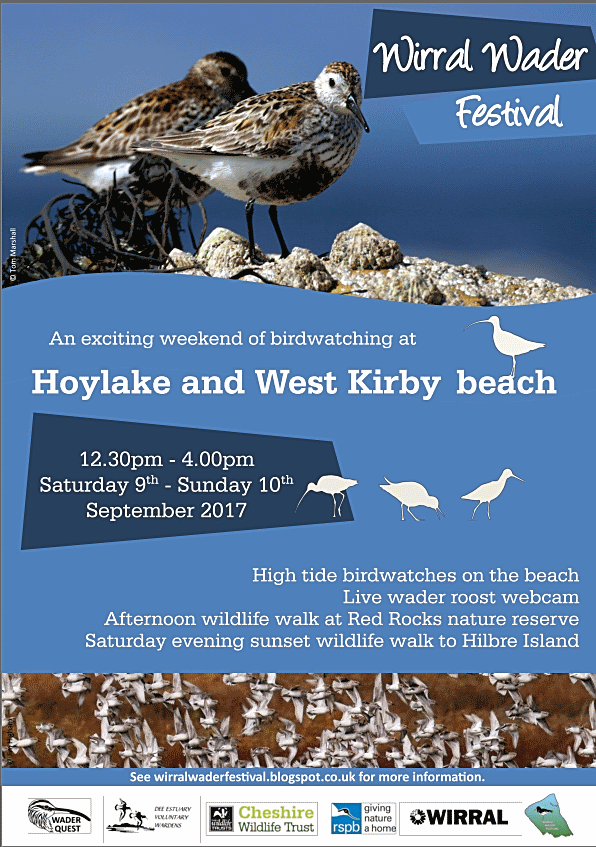
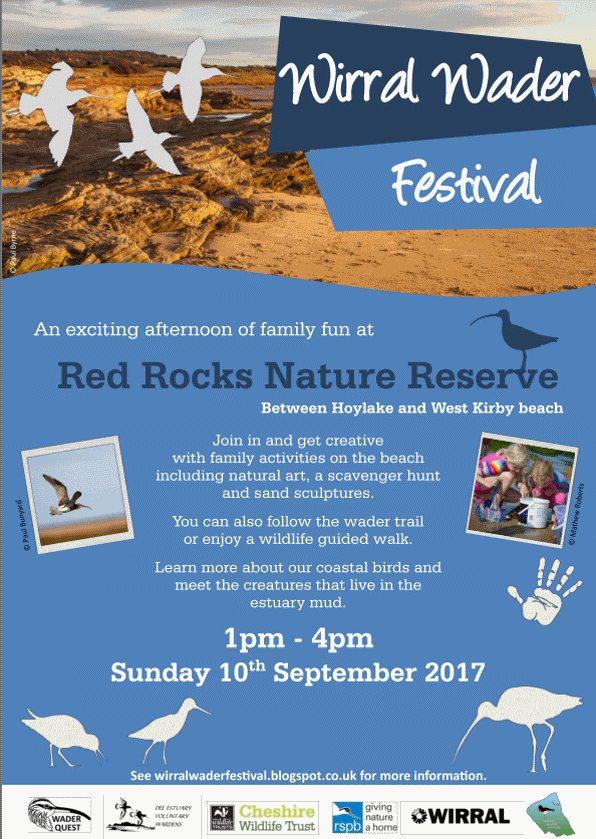
Saturday
September 9th - Book Launch: 'Rare and Scarce Birds of
Cheshire and Wirral'.
10am-4pm
Price: Free entry to Reception Hide (normal admission charges apply to
non-members to access rest of reserve); book is priced £24.99, cash
sales only.
Don't miss this exclusive opportunity to pick up your copy of this
brand new publication hot off the press and meet its authors Allan
Conlin and Eddie Williams. 'Rare and Scarce Birds of Cheshire and
Wirral' is a must-have for any local birdwatcher, offering detailed and
comprehensive historical records of the birds you won't find every day
- or even every year!
Drop in any time between 10am and 4pm and ask the authors about their
local birdwatching experiences and putting together the book.
Book is priced £24.99, CASH SALES ONLY.
